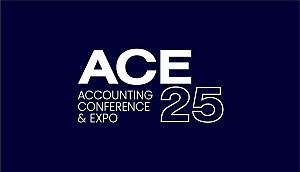You’re out of free articles for this month
Speaking at the CGW annual adviser conference last week, Walrut and Silcock said the process of determining the beneficiaries and their obligations in trust deeds could often pose challenges and difficulties for advisers and warned that a list of eligible beneficiaries should not be read in isolation.
Both lawyers cautioned that getting the beneficiaries correct was crucial, as distributions made to someone who was not a beneficiary or that failed could drastically affect tax outcomes.
Silcock said the trust deed must be read with a “fine tooth comb” as there are often other provisions in the body of the deed that can impact who is actually eligible.
“Importantly, we need to look at the defined terms that are used in that list of eligible beneficiaries. For example, when looking at the primary beneficiary of a trust we need to double check the status of their spouse, when the spouse was first qualified and if the spouse would continue to qualify,” she said.
This includes former or current partners of the primary beneficiary’s spouse, which may also be considered as an eligible beneficiary if personal choices and circumstances allow it.
“There are a whole heap of questions that we need to work through before we can assume or know that someone qualifies as a beneficiary so that we’re able to make distributions to them from the trust.”
Walrut and Silcock also highlighted the issue of who is captured as a child of the primary beneficiary or any other child beneficiaries.
It is not uncommon for children to be an undefined term in a trust deed and which then requires an adviser to consider whether it captures biological children and/or formally and informally adopted children as eligible beneficiaries on the trust deed, Silcock said.
This also required an adviser to look into potential problems if ineligible children have been receiving distributions from the trust when they were not identified as beneficiaries of the trust.
“We need to look at defined terms, and we need to look at the rest of the provisions in the trust deed because sometimes you’ll find things like an overall restriction amount against making capital distributions to certain people,” Silcock added.
When beneficiaries and the distributions weren’t clearly outlined and noted, the ATO could determine trust distributions as failed if an audit were to occur.
Walrut said in the instance that a deed had not been properly read and a distribution was made to someone who was not a beneficiary or someone was unaware of being a beneficiary, the Tax Office could conduct income tax assessments.
“From this, people who didn’t know they were default beneficiaries would now have thousands of dollars in tax liabilities, which the ATO can then pursue them for. So, from a tax perspective, if these things are not being checked, it can result in some very bad tax outcomes for people that you weren’t planning on having assessments for,” he said.
Incorrect distributions could also be a problem in the instance of the trust being wound up or required to be wound up in insolvency, as liquidators could seek restitution-type claims from people who were correctly distributed to.
“The reason I raise this is that in a lot of our deeds, if we have a family trust election that’s made, we prohibit distributions out to anyone who’s not a member of the family group for tax purposes. The rationale for that is that the family trust distribution tax problems are going to far outweigh any income tax problems,” Walrut said.
Walrut and Silcock said if a deed was not read properly to begin with and the beneficiaries were not clearly defined, lawyers could not guarantee that this could be resolved to save the distributions and avoid tax implications.

 Login
Login






